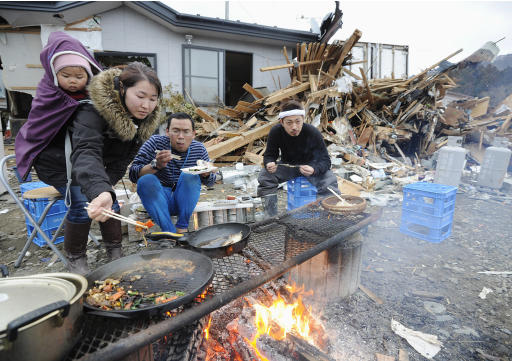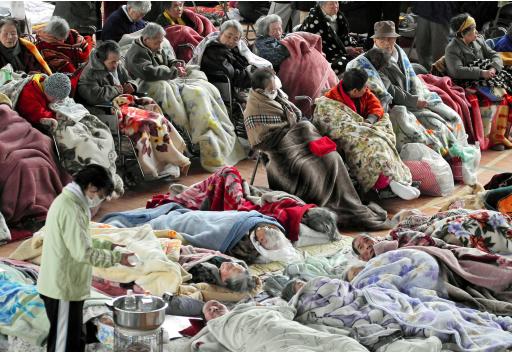THANKS TO YAHOO
 two days after the disaster, a magnitude 9 earthquake and tsunami that swept many coastal towns east of Japan, millions of people survive on little food and water, without heating in freezing temperatures, amid a nuclear crisis without precedent. Miles lost their homes and the number of dead and missing over 11,000.
two days after the disaster, a magnitude 9 earthquake and tsunami that swept many coastal towns east of Japan, millions of people survive on little food and water, without heating in freezing temperatures, amid a nuclear crisis without precedent. Miles lost their homes and the number of dead and missing over 11,000. In a rare address to the nation, Emperor Akihito expressed his condolences to the victims of their country devastated by an earthquake and tsunami, and urged the Japanese not to faint.
"It is important that each of us share the dark days before us," said Akihito, 77, a deeply respected figure around the country. "I pray that we all care for each other and overcome this tragedy," he added. 


As days go by, more and emerging over the incredible stories of dramatic survivor and victims of the devastated villages of the northeastern coast of Japan.
Since the strong earthquake which was followed by a devastating tsunami, authorities have struggled to prevent an environmental catastrophe for the damage caused to the Fukushima Dai-ichi plant, located 220 kilometers (140 miles) north of Tokyo . The tsunami brought down the emergency diesel generators needed to keep the fuel cold nuclerar, causing a nuclear crisis.
It was the worst nuclear crisis that has affected Japan since the atomic bombs dropped Hiroshima and Nagasaki during World War II. It is also the first time that such a nuclear threat was made in the world from the nuclear plant disaster in Chernobyl, Russia in 1986.
The devastating wall of water unleashed by the earthquake killed thousands of inhabitants of the northeastern coast of Japan, devastated entire villages, flooded roads and destroyed ports, oil refineries, steel mills and factories left hundreds without work.
Experts say the cost of destruction exceeds the amount which caused the catastrophic 1995 earthquake in Kobe, which according to Standard & Poor's amounted to a total of 159,000 million dollars.
The four most affected prefectures, Iwate, Miyagi, Fukushima and Ibaraki, home industries from agriculture, to auto parts and appliances, which constitute 6% of Japan's economy.
Hundreds of thousands of people have spent five nights with little food, water or heat in freezing temperatures many of them homeless, while trying to find their loved ones.
Sendai Port, the largest in the Northeast has been destroyed. Through its vast docks spent all export shipments type. Three other ports, Hachinohe, Ishinomaki and Onahama, have had significant damage and is unlikely to work for several months.

0 comments:
Post a Comment